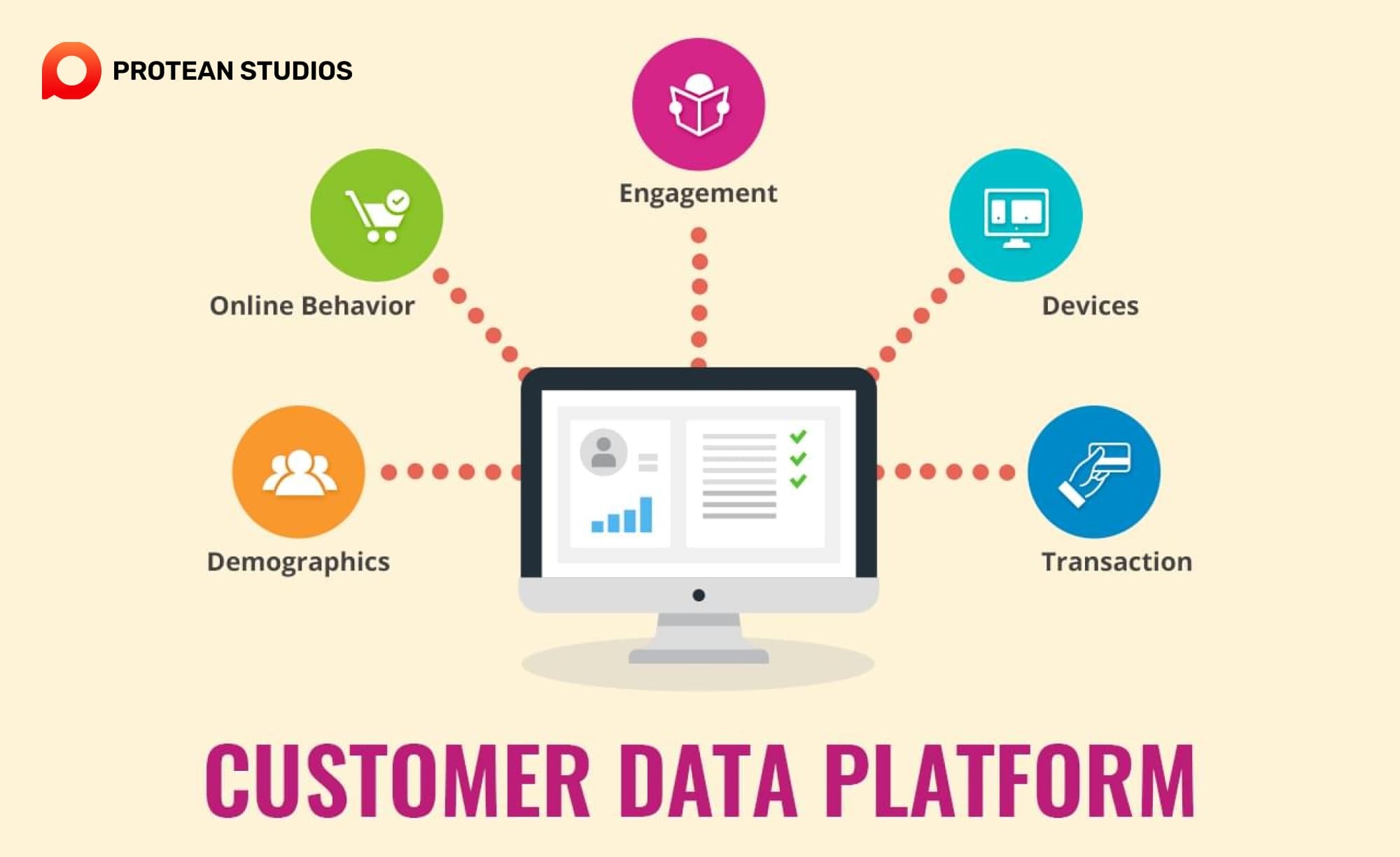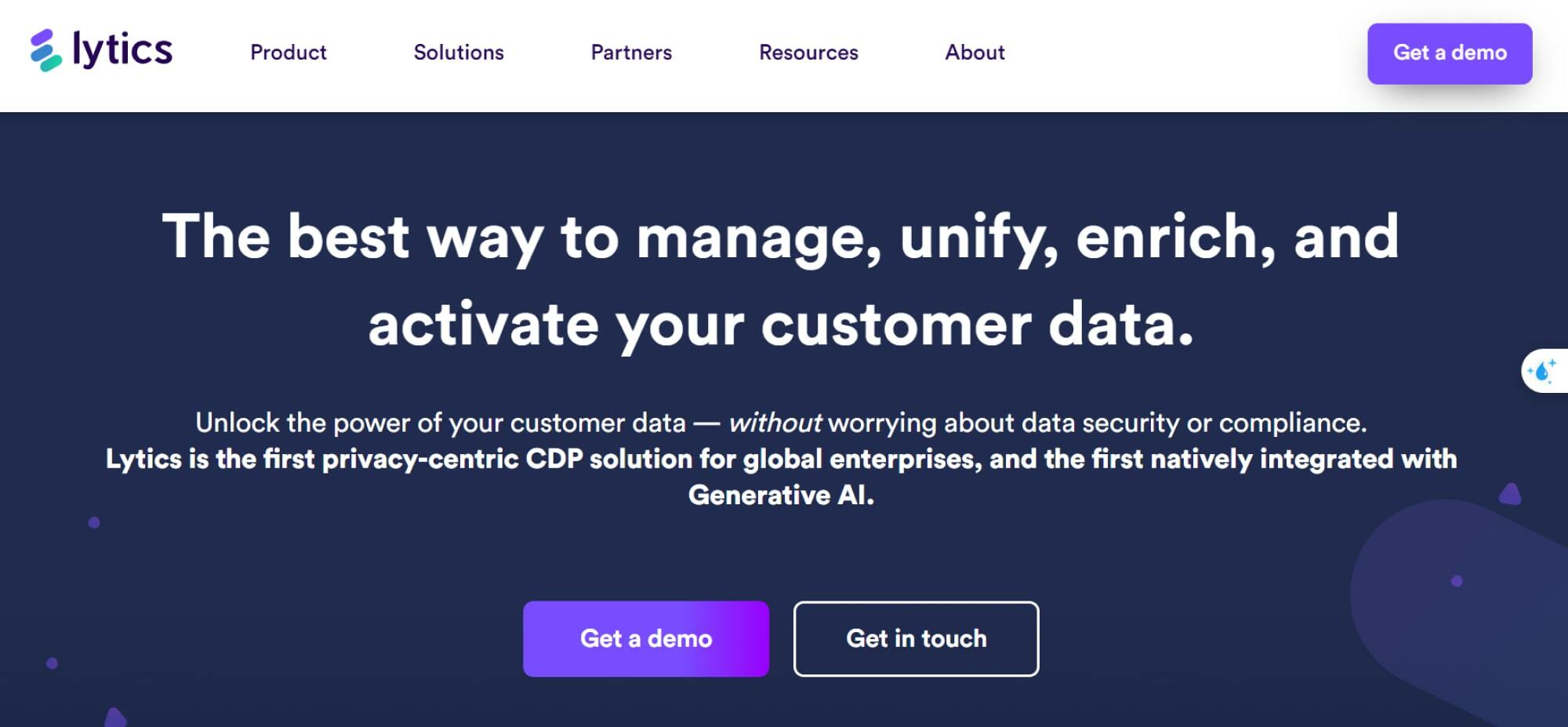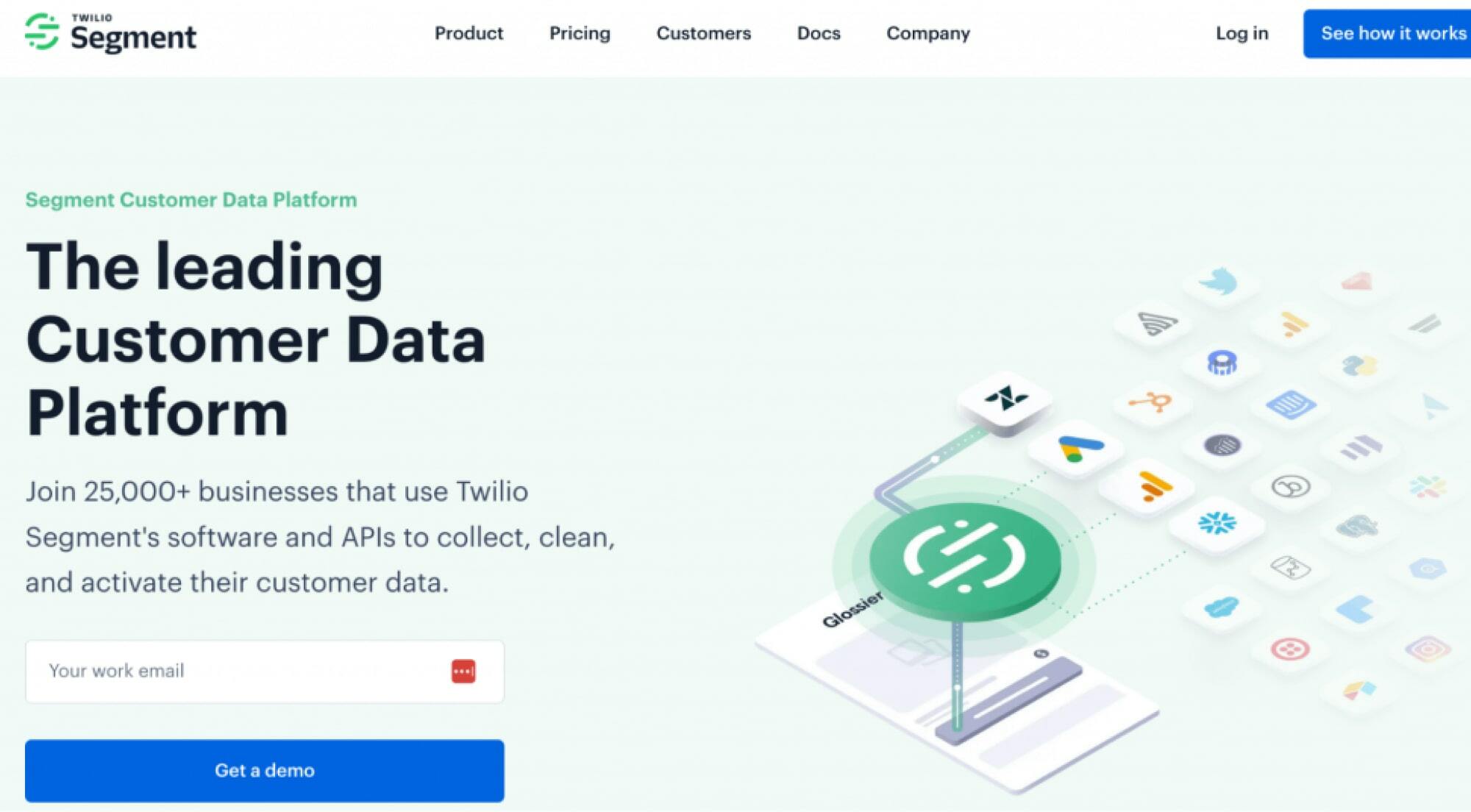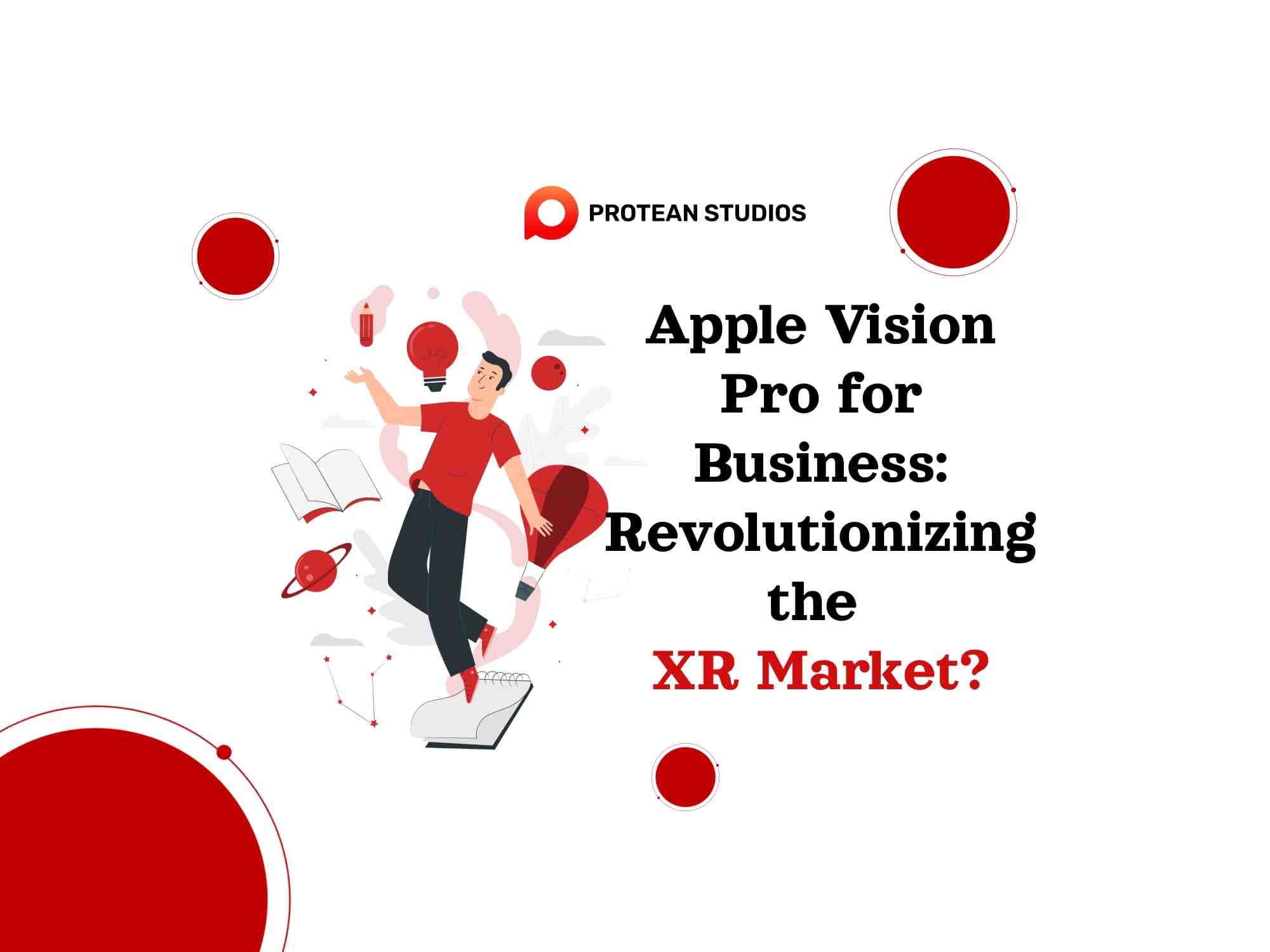In today's data-driven marketing landscape, understanding your customers is more important than ever. But with customer data scattered across many channels, it is quite difficult for you to gain a unified view. This is where customer data platforms (CDPs) come in, and they are revolutionizing the way businesses manage and leverage customer data.
As we move into 2024, CDPs are ready to play an even bigger role in marketing success. This guide explores the top 8+ CDPs to consider, helping you find the perfect platform to unlock the power of your customer data.
Quick facts about customer data platforms
A customer data platform is a software tool that businesses use to organize and manage all the information they collect about their customers in one place. Thus, CDPs unify customer data from various sources (website, CRM, email, etc.) into a single, centralized profile.

Here are some features of CDP, as follows:
Goal: Gain a deeper understanding of individual customers to personalize marketing, improve customer journeys, and boost customer relationships.
Benefits:
Single customer view: See all customer interactions in one place.
Personalization: Deliver targeted marketing campaigns based on individual preferences.
Omnichannel marketing: Ensure consistent messaging across all channels.
Improved customer service: Provide more relevant and helpful support.
Focus: CDPs handle first-party data (data you collect from customers) in contrast to data management platforms (DMPs), which focus on third-party data (purchased data).
Popularity: The demand for CDPs is growing due to the increasing need for customer-centric marketing strategies.
To know more about CDP, you can reference here: Customer Data Platform (CDP) and All Basic Knowledge
Top 8+ CDP for effective marketing campaigns
CDPs are complex tools that collect, organize, and activate customer data across various touchpoints. Here's a look at the top 8+ CDPs that can revolutionize your marketing efforts:
1. NotifyVisitors
This is a versatile platform that not only helps in aggregating customer data but also in automating marketing workflows. NotifyVisitors’s real-time analytics can empower your campaigns with instant insights.
2. BlueConic
BlueConic is a special tool that helps businesses gather all their customer information in one place. This helps them get a complete view of their customers. With BlueConic, businesses can understand their customers better and organize them into different groups for more effective communication.
BlueConic also makes it simple to create special messages on websites and send personalized emails to customers. But some people have found that it doesn't always work with other tools, and it doesn't offer all the analytics and reports they need.
3. Lytics
Lytics uses advanced technology like machine learning and data science to help both data teams and marketers. And then, make their campaigns smoother across different channels. It gives a complete picture of customers and suggests smart ways to improve campaigns based on data.

Lytics also has easy-to-use tools for getting clients involved, dividing audiences into groups, and personalizing websites. But some users say it's not very customizable and can be tricky to connect with other apps.
4. Emarsys
Emarsys offers a comprehensive marketing cloud solution with a strong CDP foundation. It's a good fit for businesses seeking an all-in-one platform for marketing automation, customer engagement, and data management. It offers a suite of tools that cater to various aspects of marketing, from segmentation to campaign execution.
5. Segment
Segment is the pioneer in popularizing CDPs. Like Emarsys, Segment was acquired by an enterprise company (Twilio) in 2020, but it continues to operate as a standalone CDP. Segment offers many integrations with leading marketing tools, customer support platforms, and data warehouses. Moreover, it can integrate with Twilio Engage, allowing brands to enhance their SMS and email campaigns with insights from their combined data.

6. Bloomreach Engagement
Bloomreach Engagement CDXP provides a complete solution for bringing together customer data and improving the customer experience. Businesses can use the platform to gather, organize, and protect their data, which unlocks powerful analytics and valuable customer insights.
With Bloomreach Engagement, businesses can gain a deeper understanding of their customers and create more targeted campaigns. Yet, some users said that the platform doesn't offer automatic dashboards for surveys and has a complicated setup process for web layers.
7. Tealium AudienceStream CDP
Part of Tealium's broader customer data platform (CDP) ecosystem, AudienceStream offers robust data collection, management, and activation capabilities. Ideal for businesses requiring a comprehensive CDP solution that integrates with existing Tealium technologies.
8. mParticle
mParticle stands out as a straightforward yet robust CDP, enabling businesses to provide outstanding customer experiences. It integrates with current CRM systems and ensures real-time data synchronization across various touchpoints. mParticle proves beneficial for crafting product roadmaps, tracking customer journeys, and formulating marketing strategies.
With its excellent user interface design and swift, dependable data connections, mParticle offers a seamless experience. Yet, its pricing may be on the higher side, and there are limitations when it comes to editing existing data connections.
Frequently Asked Questions (FAQs)
Understanding the nuances of customer data management is crucial for businesses aiming to leverage data-driven strategies. Here, we address some of the most frequently asked questions about customer data platforms (CDPs), their differences from data management platforms (DMPs), and customer relationship management (CRM) systems, as well as the types of data they use.
Are CDPs the same as DMPs?
No, CDPs and DMPs serve different purposes. A CDP is a system that consolidates and integrates customer data from various sources into a single, comprehensive customer profile. This data is then available to other systems for marketing, customer service, and other customer experience efforts.
A DMP, or data management platform, collects and manages cookie IDs and online data to help advertisers target ads to the right segments of users. DMPs are more focused on anonymous data and broad segment marketing than personalized marketing. Ì you want to know clearly differences, you can see here: CDP Vs. CRM Vs. DMP: What's The Difference?
# How Do CDPs Differ from CRM Systems?
Both CDPs and CRMs play a role in customer relationship management, but they cater to different aspects.
Data Focus: CRMs handle structured sales data such as contact information, sales history, and interactions with sales representatives. CDPs focus on both structured and unstructured data (website behavior, social media engagement, etc.) to create a more holistic customer profile.
User Focus: The goal of designing CRMs is for sales teams to manage customer relationships and sales opportunities. CDPs are used by marketers to create targeted campaigns and personalized experiences.
# What Types of Data Do CDPs Use?
CDPs can take advantage of many data points to create a complete customer profile. This includes
First-party data: website behavior, sales history, email interactions, app usage, loyalty program data, etc.
Second-party data: customer data obtained from trusted partners with your customer's consent.
Zero-party data: information customers provide about their preferences and interests through surveys or forms.
Offline data: customer data from physical stores, call centers, or surveys.
Customer data platforms (CDPs) are becoming essential for businesses in 2024. With a CDP, you can unify customer data from various sources, gain a deeper understanding of your customers, and personalize interactions across all channels.




